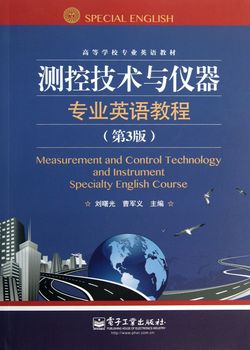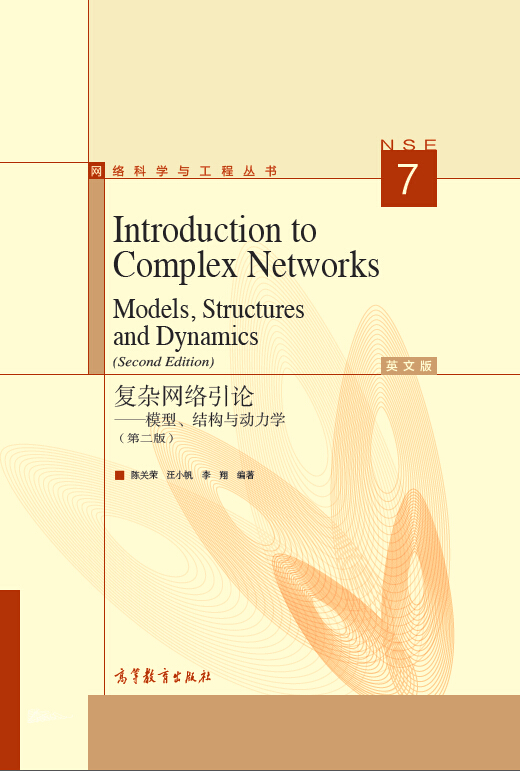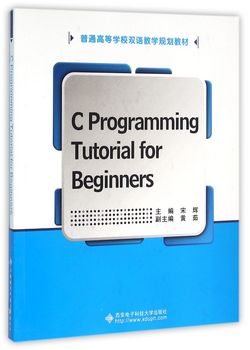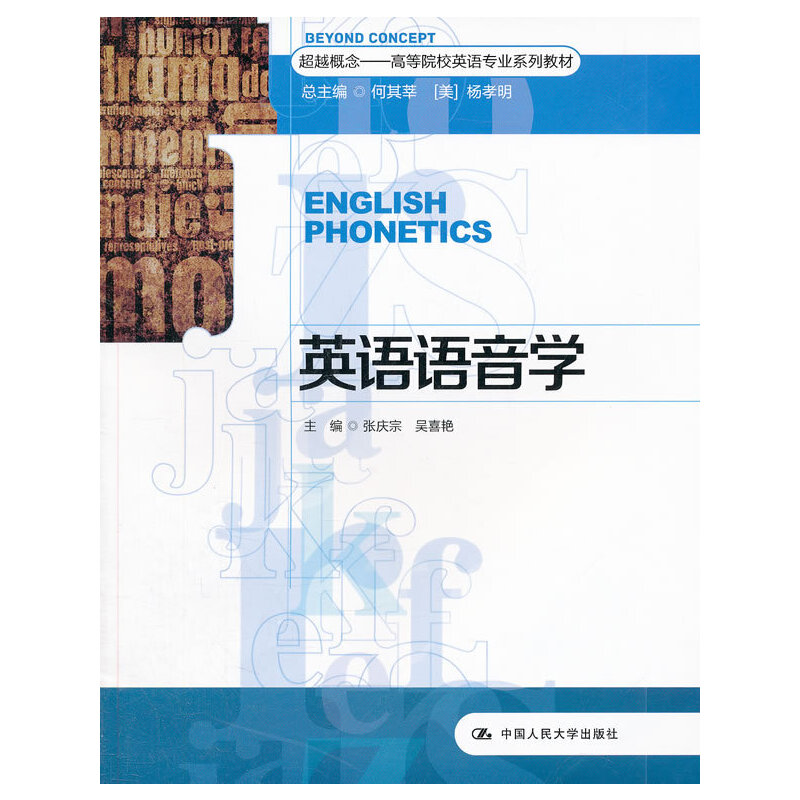新编语言学导论
作者: 文秋芳 衡仁权
出版时间:2011-03-02
出版社:高等教育出版社
普通高等教育“十一五”国家级规划教材
- 高等教育出版社
- 9787040287134
- 1
- 243302
- 平装
- 16开
- 2011-03-02
- 323
- 213
- 文学
- 外国语言文学
《普通高等教育十一五国家级规划教材·新编语言学导论》分为三部分。第一部分语言体系(Languagesystem),第二部分语言运用(Languageuse),第三部分语言学习(Languagelearning)。全书用英文撰写,行文流畅。简明易懂,概念明确,例证丰富。每个章节后面附有总结(Summary)、学习建议(Suggestionsforstudy)、练习(Questionsandexercises)与小型研究课题(Mini—researchproject),便于教师组织教学,也方便读者自学。
本书可作为英语专业本科学生的教材,也可作为硕士研究生的辅助读本。
前辅文
Introduction
1 Linguistics and English linguistics
2 Structure of the book
Part I Language System
Overview
Chapter One What Is Language?
1.1 The nature of language
1.1.1 Defining language
1.1.2 The design features of language
1.2 Distinctions between important concept pairs in linguistic study
1.2.1 Synchronic and diachronic
1.2.2 Langue and parole
1.2.3 Competence and performance
1.2.4 Syntagmatic and paradigmatic
Summary
Suggestions for study
Questions and exercises
Mini-research project
Chapter Two Phonetics
2.1 Speech organs
2.2 Consonants and vowels
2.2.1 The International Phonetic Alphabet
2.2.2 Describing the English consonants
2.2.3 Describing the English vowels
Summary
Suggestions for study
Questions and exercises
Mini-research project
Chapter Three Phonology
3.1 Important concepts in phonology
3.1.1 Phonemes
3.1.2 Minimal pairs and sets
3.1.3 Phonemes, phones and allophones
3.2 Identifying phonemes
3.2.1 Environment and distribution
3.2.2 Three types of distribution
3.3 Sequences of phonemes
3.4 Co-articulation effects
3.4.1 Assimilation
3.4.2 Elision
3.5 Supra-segmental features
3.5.1 Stress
3.5.2 Tone and intonation
3.5.3 Juncture
Summary
Suggestions for study
Questions and exercises
Mini-research project
Chapter Four Morphology
4.1 What is morphology?
4.2 Morphemes
4.3 Classifications of morphemes
4.3.1 Roots and affixes
4.3.2 Free morphemes and bound morphemes
4.3.3 Prefixes, suffixes and infixes
4.3.4 Inflectional and derivational affixes
4.3.5 Root, base, and stem
4.4 Morphemes, morphs and allomorphs
4.5 Empty morph and zero morph
4.6 Morphemic analysis
4.7 The role of morphology in English
4.7.1 Grammatical functions of inflectional morphology
4.7.2 Derivational morphology and word-formation processes
Summary
Suggestions for study
Questions and exercises
Mini-research project
Chapter Five Syntax
5.1 Structural description of sentences
5.1.1 Syntactic relations
5.1.1.1 Sequential (syntagmatic) relations
5.1.1.2 Substitutional (paradigmatic) relations
5.1.1.3 Hierarchical relations
5.1.2 Labeled IC analysis and the hierarchical structuring of English sentences
5.2 Generation of sentences
5.2.1 Surface structure and deep structure
5.2.2 A general description of phrase structure rules (PS rules)
5.2.2.1 Noun phrases and adjective phrases
5.2.2.2 Verb phrases and auxiliary phrases
5.2.3 Transformational rules
5.2.3.1 T-Affix
5.2.3.2 Passivization
Summary
Suggestions for study
Questions and exercises
Mini-research project
Chapter Six Semantics
6.1 What is meaning?
6.2 Lexical semantics
6.2.1 Componential analysis
6.2.1.1 What is componential analysis?
6.2.1.2 General and specific semantic features
6.2.1.3 Redundant semantic features
6.2.1.4 Semantic classes
6.2.2 Semantic field
6.2.2.1 What is a semantic field?
6.2.2.2 Sense relationships
6.2.3 Lexical ambiguity
6.2.3.1 Polysemy
6.2.3.2 Homonymy
6.2.4 Collocations in English
6.3 Sentence semantics
6.3.1 What is essential for determining sentence meaning?
6.3.2 Semantic roles
6.3.3 Grammatical functions and semantic roles
6.3.4 Semantic anomaly
Summary
Suggestions for study
Questions and exercises
Mini-research project
Part II Language Use
Overview
Chapter Seven General Principles of Communication
7.1 The Cooperative Principle
7.1.1 The four maxims of the Cooperative Principle
7.1.2 Violation of the maxims and conversational implicature
7.2 The Politeness Principle
7.3 The Principle of Relevance
7.3.1 The basic principle
7.3.2 Contextual effects and processing effort
7.3.3 Optimal relevance
Summary
Suggestions for study
Questions and exercises
Mini-research project
Chapter Eight Intercultural Communication
8.1 Important concepts
8.1.1 What is culture?
8.1.2 What is communication?
8.1.3 What is intercultural communication?
8.2 Language and culture
8.2.1 The impact of language on culture
8.2.2 The impact of culture on language
8.2.2.1 Impact at the lexical level
8.2.2.2 Impact at the discourse level
8.3 Diverse intercultural communication patterns
8.3.1 Low-context and high-context communication
8.3.2 Direct and indirect verbal communication
8.3.3 Person-oriented and status-oriented verbal communication
8.3.4 Self-enhancement and self-effacement communication
8.4 Potential problems in intercultural communication
8.4.1 Seeking similarities
8.4.2 Stereotyping
8.4.3 Prejudice
8.4.4 Ethnocentrism
8.4.5 Culture shock
Summary
Suggestions for study
Questions and exercises
Mini-research project
Chapter Nine Language Variety
9.1 Language—dialect—regional dialect—social dialect
9.1.1 Language and dialect
9.1.2 Regional dialects
9.1.3 Social dialects
9.2 Lingua franca—pidgin—creole
9.2.1 Lingua franca
9.2.2 Pidgin
9.2.3 Creole
9.3 Style—genre—taboo—euphemism
9.3.1 Style
9.3.2 Genre
9.3.3 Taboo
9.3.4 Euphemism
9.4 Gender and language use
Summary
Suggestions for study
Questions and exercises
Mini-research project
Part III Language Learning
Overview
Chapter Ten Major Issues in SLA
10.1 Contrastive Analysis Hypothesis
10.2 Error Analysis
10.3 The Interlanguage Hypothesis
10.4 The Monitor Model
10.5 The Output Hypothesis
10.6 The Open-Choice Principle and the Idiom Principle
Summary
Suggestions for study
Questions and exercises
Mini-research project
Chapter Eleven Factors Affecting Second Language Learning
11.1 Factors not easily modified by learners
11.1.1 Anxiety
11.1.2 Inhibition and risk-taking
11.1.3 Extroversion/Introversion
11.2 Factors easily modified by learners
11.2.1 Motivation and attitudes
11.2.2 Self-esteem
11.2.3 Learner strategies
11.2.3.1 Language learning strategies
11.2.3.2 Language use strategies
11.2.3.3 Differences between effective and ineffective learners
Summary
Suggestions for study
Questions and exercises
Mini-research project
Chapter Twelve Developing an Intercultural Communicative Competence
12.1 A brief review of current models of second language competence
12.2 Why are current models inadequate?
12.3 A model of intercultural communicative competence
12.4 Intercultural competence in communicative language use
Summary
Suggestions for study
Questions and exercises
Mini-research project
References









